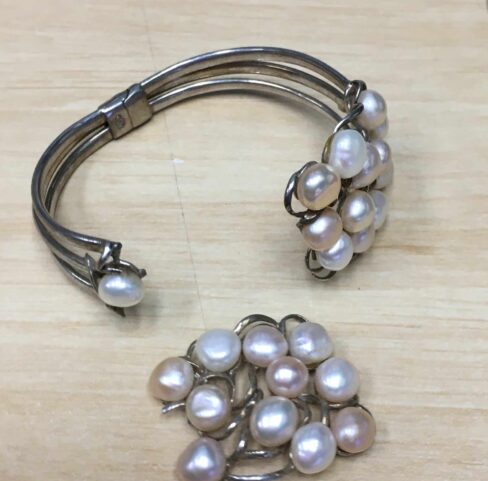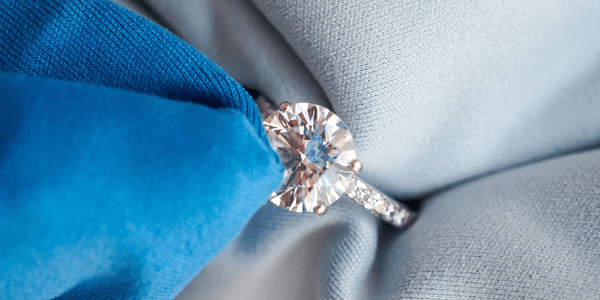
Imagine—you’re going out for a special meal. You’ve picked the perfect outfit, shoes and makeup.
You go to add your favourite piece of silver jewellery as a finishing touch, but you open your jewellery box to discover it’s covered in awful brown and black tarnish, rendering it unwearable.
What now?
It’s important to know that your silver will not sparkle if you don’t take care of it well. We understand the magical feeling of receiving a beautiful piece of silver from a loved one, so when you’re not showing off your precious piece, you’ll need to find somewhere safe to store it to keep it looking better than ever.
Caring for your silver jewellery is key to preserving its shine and sparkle. Silver is prone to tarnishing due to exposure to air, moisture and other elements, so you will need to take extra steps to keep your pieces looking their best.
Fortunately, there are some simple ways that you can protect your silver from becoming tarnished prematurely. One way is to store it properly when you do not wear or use it; this will help prevent oxidation, which discolours the metal surface.
Jewellery boxes are ideal to keep your silver safe as they provide an airtight environment where dust won’t settle on the metal surface and cause corrosion over time.
Additionally, cleaning your silver regularly using a specialist tarnish remover product or DIY solutions such as baking soda mixed with water can help restore the damage that dirt build-up has caused without harming or damaging the item itself.
Lastly, wrapping up each piece individually in anti-tarnish materials such as muslin cloth or tissue paper helps minimise oxidation while also protecting against scratches that may occur during storage or transportation.
What is a silver tarnish ?
Tarnish is a product of a chemical reaction between a metal and a non-metal compound, most commonly oxygen and sulphur dioxide, which forms a metal oxide on the metal.
The good news is that normal tarnish on silver is not corrosive and the metal underneath the oxide layer should be just fine. However, silver can also tarnish from exposure to chlorine and acids which may potentially be more damaging to the metal, including causing pits to appear.
Tarnish can appear as a yellow, brown, black or grey coating on the surface of your silver jewellery, which is sometimes quite patchy. Sterling silver tarnishes more easily than pure silver due to its copper content and this tarnish is likely to be more noticeable and darker in colour. However, even pure (or fine) silver can develop a matte grey oxide on its surface over time.
Most jewellery is made with sterling silver or similar alloys because pure silver is generally too soft to be made into jewellery. However, you may own sterling silver jewellery which has had a pure silver plating applied to its surface, which can help to slow down tarnishing.
How silver tarnishes?
Tarnish appearing on your silver jewellery is completely normal. Even the best silver jewellery tarnishes, so don’t assume the problem is related to the quality of your jewellery. If anything, tarnish indicates that it really is silver!
When silver is exposed to gases in the air – especially sulphur – it discolours and darkens as it reacts with the gas to form a layer of tarnish on the surface.
Many things in your everyday life can cause your silver to tarnish. These include:
- Hand creams
- Perfumes
- Soaps
- Makeup
- Chlorine from swimming pools or cleaning chemicals
- The PH of your skin
- The air around you, especially if it’s humid
Silver tarnish is almost impossible to avoid, but there are a lot of factors that can make it more or less obvious and happen more or less quickly. The good news is that you can make a big difference too.

How to clean silver jewellery?
There is more than one way to clean silver jewellery. Your choice of method will depend on how tarnished the piece is, what materials you have on hand and how careful you want to be.
Whichever cleaning method (or combination) you choose, make sure you have at least two separate gentle cloths on hand: at least one for cleaning and one for drying. Having some good quality absorbent kitchen towels on hand is also helpful as the towels will easily mop up water from rinsing your jewellery, making it much easier to finish drying with the soft drying cloth you have set aside.
We also recommend having a soft bristled brush to help get into difficult areas and to remove debris.
So here are our suggested cleaning methods, from least invasive to most. You might only need to use one of them or possibly a combination. Let’s get cleaning …
This step definitely won’t remove any tarnish from your jewellery, but starting your cleaning process with a gentle, fragrance free soap (liquid Castile soap is our favourite) diluted in warm water is highly recommended. It will help to remove dust and grime, not only making your jewellery look better but also making it much easier to remove the tarnish lurking underneath the grime.
Use your soft cleaning cloth to clean the silver in the solution. You can also use a soft bristled brush if needed, but be careful not to scuff or scratch the surface, especially with shiny pieces.
Silver dip
Having a good quality silver dip on hand for your sterling silver jewellery is highly recommended. For lighter tarnish, it will often do the trick very quickly and easily, but if your jewellery is more heavily tarnished, we recommend considering the electrochemical cleaning method or silver polish as your starting point.
Using silver dip will quickly remove tarnish from your silver using a chemical process. For lighter tarnish, it generally works in less than a minute. It will also remove tarnish from crevices that are impossible to reach with a cloth or soft brush. For this reason, it may be a good idea to finish with a silver dip after more heavy cleaning methods to clean the areas you can’t otherwise reach.
Jewellery polishing cloth
A good quality precious metal or silver polishing cloth should be an essential part of your silver cleaning kit. Luckily we can help you out with our professional quality jewellery polishing cloths.
A jewellery polishing cloth can remove heavier tarnish than a silver dip, but it won’t be as effective as our homemade electrochemical cleaning method or silver polish for very heavy tarnish. However, it is generally easier and quicker than these processes, as well as being more gentle than a silver polish or cream. A jewellery polishing cloth will also give your jewellery a lovely shine.
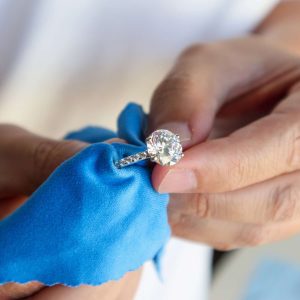
Rinsing and drying
Just to be crystal clear—you really do need to thoroughly rinse and dry your jewellery after any cleaning process you’ve undertaken. This should be thorough enough to remove all residues from the cleaning process and will slow the build up of tarnish, so you won’t have to go through the process again too soon.
Use clean water for rinsing (under a tap is fine) and ensure the water reaches all crevices in the jewellery. I generally rest rinsed pieces on a good quality paper kitchen towel to absorb water droplets before patting them dry with the paper towel. I will then finish with a dry soft cloth to remove as much remaining moisture as possible.
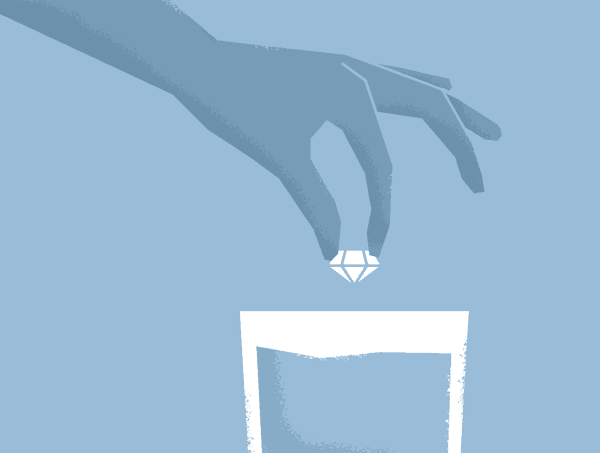
How to prevent tarnish on silver jewellery
With the proper care, you can keep your silver jewellery looking as new and sparkling as the day you bought it for years to come. Here are our tips to help you care for your silver jewellery into the future.
Check out some of our pro tips:
Jewellery boxes
Jewellery boxes are a great way to care for your silver. Better yet, choose an airtight box or an anti-tarnishing wooden box to keep the colour and shine lasting longer.
Clean your jewellery
Lotions, soaps, sweat and dirt are common substances that often leave our silver in less-than-perfect condition. Buying a tarnish remover is the best way to go, but if you are looking to save a few dollars, there are some great DIY tarnish remover solutions that you can make at home.
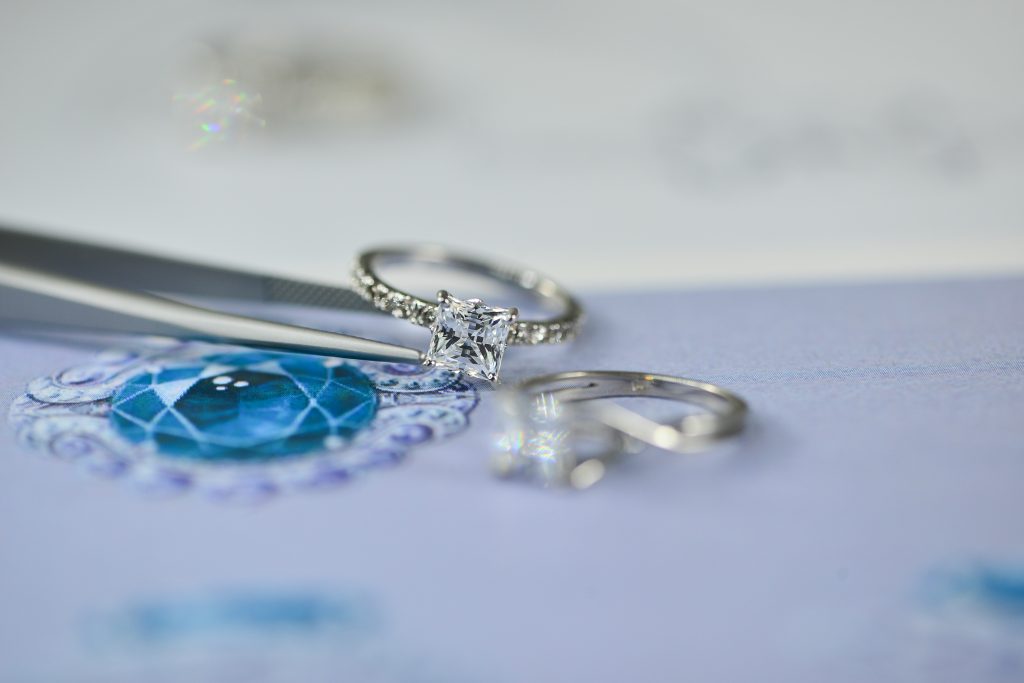
Wrap your jewellery in anti-tarnish material
Wrap your silver in a soft material that will prevent it from being tarnished, such as muslin or tissue paper.
Caring for silver jewellery can be challenging, but it doesn’t have to be when the right tips and tricks are learned and employed.
Separate your jewellery
To prevent your precious pieces from scratching and scraping, place them in separate boxes or jewellery compartments. Make sure you store them in a secure place with little room for the jewellery to move around.
In conclusion:
By following the simple steps outlined above, you can keep your silver jewellery looking its best for years to come. Investing in a decent quality jewellery box and cleaning material is essential to preserve the shine of silver jewellery. Additionally, taking extra precautions such as wrapping each piece individually will help protect against tarnishing due to oxidation caused by air exposure or dirt build-up over time.
Caring for your jewellery may require more effort than with other metals, but if you do this properly, you’ll never have to worry about losing that special sparkle again!
For more expert advice on how you can give your silver that long-lasting shine, give us a call at (02) 9299 4251 – ask for Daniel.




